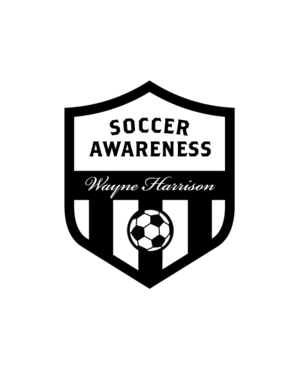Interaction of Wide Players in 3-1-3-3 - Training Center Exclusive
/The Movement Off the Ball Interactions of 2 and 7, and 3 and 11
We want 7 and 11 to cut inside to do two things:
To get in a good position to receive the ball themselves
To create space of overlapping Wing Full Backs 2 or 3.
Timing this movement correctly is vital, players must not come inside too soon and be easily marked.
Resulting position is a player facing BACK to the ball.
Timing of this movement has to be LATE and FAST. The correct resulting positioning will be shown in these following slides.
Alternatively 2 and 3 can cut inside and 7 and 11 stay wide.
The timing will show that staying touchline wide will affect the opponents fullbacks position drawing them wider creating more space between themselves and their center backs; which is the space we want to attack.
If the timing of the run and pass are correct; 7 or 11 will receive the ball facing FORWARD not back and be running at the defenders at pace with the ball in front of them.
Current Movements: Its all about TIMING
(7) Has Cut inside FAR TOO early to receive the pass and takes fullback (D) with them. (8) passes the ball to (7) who has to receive with their back to the defender (D) facing backwards. (E) tracks (2). We still have possession but it could be better.
Getting in too early
(7) In far too early; the SPACE to pass into is too tight. That said maybe we can get (2) in because of it.
Preferred Movements: TIMING
Lets say (D) reads it well and tracks (7) and closes up the space, we may still get (2) in who runs into the space left by (7)s run.. Again, TIMING is the key. As (7) moves inside this is the CUE for (2) to overlap at the same time, both LATE and FAST. We wont always catch (E) like this but if (E) is ball watching then (2) may get in on their blind side.
Preferred Movements
As the ball is traveling (7) moves wide and draws (D) slightly wider; creating space inside between (D) and (C). (D) IS STILL marking SPACE INSIDE; but may slide across as shown whilst hopefully (9)’s position will keep (C) away. (9) must stay out of that space or even move AWAY from it.
Alternative and unexpected
(7) Clears the space inside and wing full back (2) makes the outside to inside run and has a shooting chance on goal.
Preferred Movements
Here (7) makes a “late and fast” outside to inside run hopefully catching (D) off guard to receive the ball at pace facing forward to attack the goal. This is a far better situation than the previous one when (7) moved inside too early.
Creating 2 v 1’s in vital areas outside the box across the opponents back four
Now we have an active 2 v 1 against (D) thru (2) and (7). (7) and (9) have an active 2 v 1 against central defender (C). (11) comes inside and (A) doesn't track inside worried about (3); so (9) and (11) have an active 2 v 1 situation against central defender (B).
Now we have an active 2 v 1 against (D) thru (2) and (7). (7) and (9) have an active 2 v 1 against central defender (C). (11) comes inside and (A) doesn't track inside worried about (3); so (9) and (11) have an active 2 v 1 situation against central defender (B).
Spaces we are trying to exploit in yellow and between defenders. What we do will depend on how the opponents position and defend.
Over-load centrally now with (7) and (11) attacking the inside spaces between defenders. Fullbacks can attack inside or stay wide to effect the positioning of (A) and (D).
Cutting inside to attack the central spaces
2 v 1s created across the back four. Appreciate opponent midfield players will track back but if this is well rehearsed by us in training we may catch them unawares in the game and their reactions may be too late to stop it. Even bigger overloads when (2), (3) and (10) join in.
Interchanges of Attackers
Interchanges of players now. I am leaving the back four intact here; but likely defenders may track opponents and leave spaces open. What will (D) do with (2) or (7)? Will (B) and (C) go short with (9) leaving a big space centrally?
Exploiting a central space created by off the ball movement by (9)
Just one defender tracking one player; in this case (C) tracking (9) short; will create a central gap for (11) or (2). If (C) doesnt track (9) then (9) can receive to feet side on; turn; and attack in a 2 v 1 with either (2) or (11) against (C).
Another idea
As an example: Into the feet of (9) and (7) and (11) cut inside to support behind or one can make a run in front for the next phase of play. (8) into (9) who lays off to (7) who plays it forward to (11).
Another idea
End Product, a Third Man Run from (11)
Another idea
End Product, a shot on goal



























